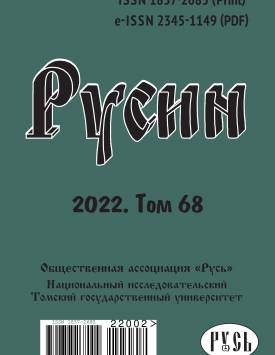The Russian language in the Tatar-Russian contact zone: cognitive processing of case forms
Slavic linguistics, as other branches of linguistics, is becoming more and more actively involved in interdisciplinary research, expanding the subject area and methodology. These new subject areas include the identification of the cognitive foundations of speech practices using not only traditional, but also experimental linguistic methods. The authors also consider it important to employ new linguistic material in the analysis, including the results of the contact of Slavic languages with languages of other morphological types. The article presents experimental evidence of the influence of the native Tatar language, belonging to the Turkic language group, on the processing of grammatical forms of the second Russian language. The study is based on the data from a corpus study of the speech practices of Tatar-Russian bilinguals under Linguistic and Cultural Diversity of Southern Siberia: Interaction of Languages and Cultures Project. The patterns revealed in the analysis of corpus data allowed formulating hypotheses about the specificity of cognitive processing of units in the zones of greatest variation and testing them in a psycholinguistic behavioral experiment using oculographic equipment with eye movement fixation. It was found that deviations from the speech standard of the Russian language manifest themselves both in the production and processing of speech. The most significant result has been obtained in the analysis of cognitive processing of locative constructions. The corpus research has revealed that bilinguals tend to skip a preposition or use a dependent noun in the nominative case. The statistical analysis has shown that the use of a noun in the nominative case with a preposition is processed slightly faster than when the preposition is omitted, so the use of the locative in the nominative case is dictated mainly by the structural features of the Turkic languages than by the omitted preposition.
Keywords
oculographic study, experiment, bilingual interference, Tatar language, Russian language, grammatical interference, caseAuthors
| Name | Organization | |
| Vladimirova Valeriia E. | Tomsk State University | picture_perfect@mail.ru |
| Rezanova Zoya I. | Tomsk State University | rezanovazi@mail.ru |
References

The Russian language in the Tatar-Russian contact zone: cognitive processing of case forms | Rusin. 2022. № 68. DOI: 10.17223/18572685/68/17
